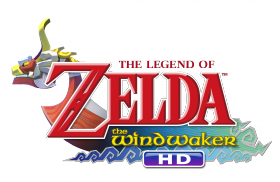
The Legend of Zelda: The Wind Waker's Artstyle 20 Years Later
Gamers are a complicated bunch. We use our voices and our words to voice concerns over the smallest issues, and then sometime later, that issue is lauded as an amazing feat that may never be replicated. We also buy games that maybe we shouldn’t have because we can’t resist the recycled technology and endless loot boxes that come with some of those titles. So, while we pretend we can do no wrong, we actually do and more often than you think. But one mistake might trump all those millions of Call of Duty copies sold and endless microtransactions purchased by your neighbour down the street. I’m talking about how, 20 years ago, gamers underestimated The Legend of Zelda: The Wind Waker’s art style, which would eventually become yet another issue, initially receiving a significant amount of hate before being lauded as something worth celebrating. This is what I’m here to talk about today, how stylised visuals create a sense of agelessness and why we, as gamers, might need to learn to look at the bigger picture more often.

First of all, let’s go back to before Wind Waker was released and delve into the history of its visuals and the development behind them. At Spaceworld 2000, two years after The Legend of Zelda: Ocarina of Time came out to critical and commercial success, Nintendo revealed a tech demo for the next Zelda game. The demo showed a realistic Link fighting Ganondorf in what looked like Hyrule Castle, and fans hoped it would be a preview of what’s to come for the next title. Its realistic visuals and impressive graphics for the time had a significant impression on fans, and they demanded that the next game should look exactly like this demo or else. Unfortunately, that never happened, and what we got was a cel-shaded adventure inspired by the likes of 60s cartoons and various anime shows. Obviously, people weren’t happy about this change, and Nintendo probably wasn’t either. Wind Waker only sold 4.6 million copies, far below Ocarina of Time’s sales of 7.6 million copies on a much less popular console. If you look at this issue strictly by the sales, it’s a disappointment, but if you look at the bigger picture, it’s nothing like that.
Wind Waker’s visuals have aged gracefully, and I’d argue it looks better than most games coming today. If Nintendo had stuck with realism, then there is no way that fans would love this game as they do now. I’ve seen so many people reminiscing about the art style these days, and it’s also worth mentioning that it had more of an impact on the Zelda series as a whole than any art style before or after it. Think about it, all the Nintendo DS games used Toon Link, he was included in Super Smash Bros. Brawl as a newcomer, and The Legend of Zelda: Breath of the Wild and its sequel seem to be taking from that art style as well. Is that not enough? Well, how about games like Journey, Killer7, and Firewatch? All these games and more will still hold up in the future, unlike titles with realistic graphics that will likely age poorly because of technological advancements. So, if gamers and developers kept this in mind, we would have more games like the Wind Waker and Okami, leading to lots of diversity in the gaming space. Isn’t that what we all want? I’m not saying realistic graphics shouldn’t exist, and sometimes I do enjoy playing those games, but what I am saying is if we would look at the bigger picture and stop hating on art styles — then I think that would be beneficial.

The Legend of Zelda: The Wind Waker is also a fantastic game, so I’m sure that helps with the nostalgia. But it’s not just that; it’s Nintendo taking a chance with their flagship series. It’s Nintendo’s willingness to take a chance and create a safer space for developers to dare to be bold, flying in the face of many AAA developers who have become too complacent. But perhaps the most important of all is Nintendo’s clairvoyance which allowed them to get weird during the GameCube generation. So, I will always look at the bigger picture instead of hating art styles because of what they did for Zelda and gaming as a whole.











COMMENTS